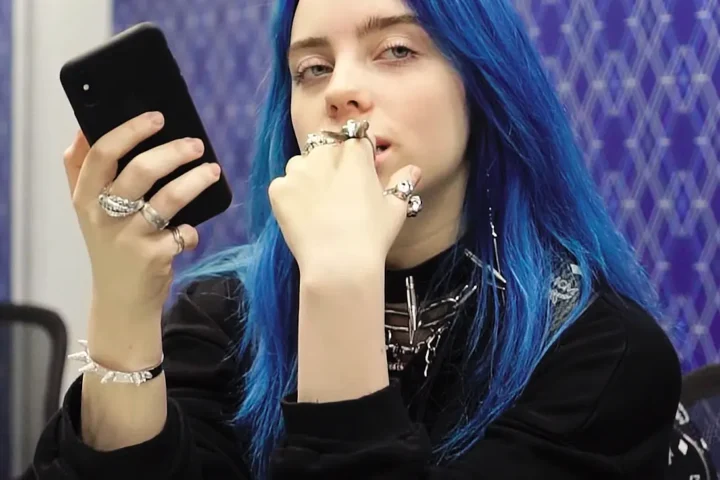Premenstrual Dysphoric Disorder (PMDD) has gained public attention through TV personality Vicky Pattison’s candid sharing of her struggles with this severe hormonal condition. Unlike regular premenstrual syndrome (PMS), PMDD is a debilitating disorder that drastically affects both mental and physical wellbeing.
What is PMDD?
PMDD is a severe form of PMS that affects approximately 3-8% of menstruating individuals. It causes extreme emotional, behavioral, and physical symptoms that occur during the luteal phase – the week or two before menstruation begins. The condition is much more serious than typical PMS, with symptoms so severe they can significantly disrupt daily life.
Pattison, 37, describes her experience as “terrifying,” often feeling like she loses herself completely during episodes. “One week I’m this bright, shiny, brilliant woman who’s strong, smart and ready for anything. Then the PMDD fog sets in and convinces me I’m worthless – that everyone hates me and the world would be better without me in it,” she shared in a recent Instagram post.
The former Geordie Shore star has detailed suffering from “crippling anxiety, relentless self-criticism and sleepless nights” during these episodes. In one particularly severe instance, she called her sister in distress saying, “I didn’t know what I was going to do. That I genuinely didn’t know what I was capable of.”
Symptoms of PMDD
PMDD symptoms are similar to PMS but much more severe. They include:
- Severe mood swings, irritability, and anger
- Feelings of hopelessness and despair
- Intense anxiety and tension
- Depression and suicidal thoughts
- Difficulty concentrating
- Fatigue and low energy
- Sleep problems (insomnia or excessive sleeping)
- Food cravings or appetite changes
- Physical symptoms like bloating, breast tenderness, and headaches
These symptoms typically begin after ovulation and resolve within a few days after menstruation starts.
Causes of PMDD
Scientists don’t fully understand what causes PMDD. Unlike what many believe, it’s not caused by abnormal hormone levels but rather an abnormal brain response to normal hormonal fluctuations during the menstrual cycle.
Research suggests several factors may play a role:
- Sensitivity to changes in estrogen and progesterone
- Irregular serotonin function (a brain chemical that regulates mood)
- Genetic factors
- History of trauma or stressful life events
Vicky Pattison’s Diagnostic Journey
Pattison received her PMDD diagnosis in 2023 after struggling with symptoms for approximately five years. Like many women with the condition, she faced dismissal from medical professionals, highlighting what she calls “medical misogyny” in healthcare.
“My experiences when I went to discuss my symptoms were horrendous,” Pattison said on ITV’s Good Morning Britain. She described being “pacified” by doctors with suggestions like removing her contraceptive implant or being told that “periods do get worse as women get older.”
After years of suffering, Pattison decided to seek private medical care. “This week I decided enough was enough and went private and told myself I wouldn’t be dismissed,” she wrote on Instagram. “When the doctor said to me ‘it sounds like you have PMDD,’ I cried. I cried because I felt heard in a medical setting for the first time in years.”
Impact on Relationships
PMDD has significantly affected Pattison’s relationship with her husband, Ercan Ramadan. Speaking on Elizabeth Day’s “How To Fail” podcast, Pattison admitted: “It absolutely kills me that for a quarter of our life, I am not the person that he fell in love with, and not the person that he thought he was marrying.”
She added, “I’m not myself. I’m not recognizable at all. I could be screaming one second and sobbing the next, then completely disassociating, unable to be social, lost, afraid, whatever it is.”
Similar Posts
Pattison credits communication as essential in helping her husband understand her condition. “I found the one thing that helps is communication. So saying to him, I’m coming into PMDD week. And he goes, ‘That’s okay. Like we’ll just take it slow.'”
Treatment Options
PMDD can be treated with several approaches:
- Medication:
- Selective Serotonin Reuptake Inhibitors (SSRIs) are the first-line treatment. The FDA has approved fluoxetine (Prozac), sertraline (Zoloft), and paroxetine (Paxil) specifically for PMDD. These can be taken continuously or just during the luteal phase.
- Hormonal birth control, especially formulations containing drospirenone, can help stabilize hormone fluctuations.
- In severe cases that don’t respond to other treatments, GnRH agonists may be used to induce a temporary menopause.
- Lifestyle Changes:
- Regular exercise
- Stress management techniques like meditation and yoga
- Improved sleep hygiene
- Dietary changes (reducing caffeine, alcohol, and sugar)
- Light therapy
- Therapy:
- Cognitive Behavioral Therapy (CBT) helps identify and change negative thought patterns
- Support groups provide community and shared experiences
- Supplements:
- Some women find relief with calcium, vitamin B6, magnesium, or chasteberry
- Surgical Options:
- In extreme cases that don’t respond to other treatments, surgical removal of the ovaries (bilateral oophorectomy) and sometimes the uterus (hysterectomy) may be considered as a last resort.
Advocacy and Awareness
Pattison has become an outspoken advocate for PMDD awareness, hoping to reach women who may be struggling undiagnosed. She gave evidence to the House of Commons Women and Equalities Committee for a report on medical misogyny, highlighting how women with conditions like PMDD are being diagnosed and treated too late.
“Due to medical misogyny, lack of awareness and misdiagnosis, I believe there are thousands — if not millions — of women suffering alone,” Pattison said. “This isn’t normal. You have a condition. A hormonal disorder. These thoughts are not a reflection of your actual value.”
Her openness has inspired others to seek help, including reality TV star Kristina Goodsell from Married At First Sight UK, who got diagnosed after hearing Pattison’s story.
Moving Forward
For those experiencing PMDD symptoms, experts recommend tracking symptoms over several menstrual cycles. This documentation can help healthcare providers make an accurate diagnosis. Women are encouraged to seek professional help and not to accept dismissal of their symptoms.

Pattison’s advice to women experiencing similar symptoms: “Please don’t ‘stiff upper lip’ this. It’s such a toxic, outdated British thing. If you’re experiencing any of the things I’ve spoken about, or if you’re struggling, go to see your doctor; go to see a good gynaecologist or, if you can, go private if people won’t hear you out in the NHS – and don’t take ‘no’ for an answer.”
Through increased awareness, proper diagnosis, and effective treatment, those suffering from PMDD can find relief and reclaim their lives from this debilitating condition.


















